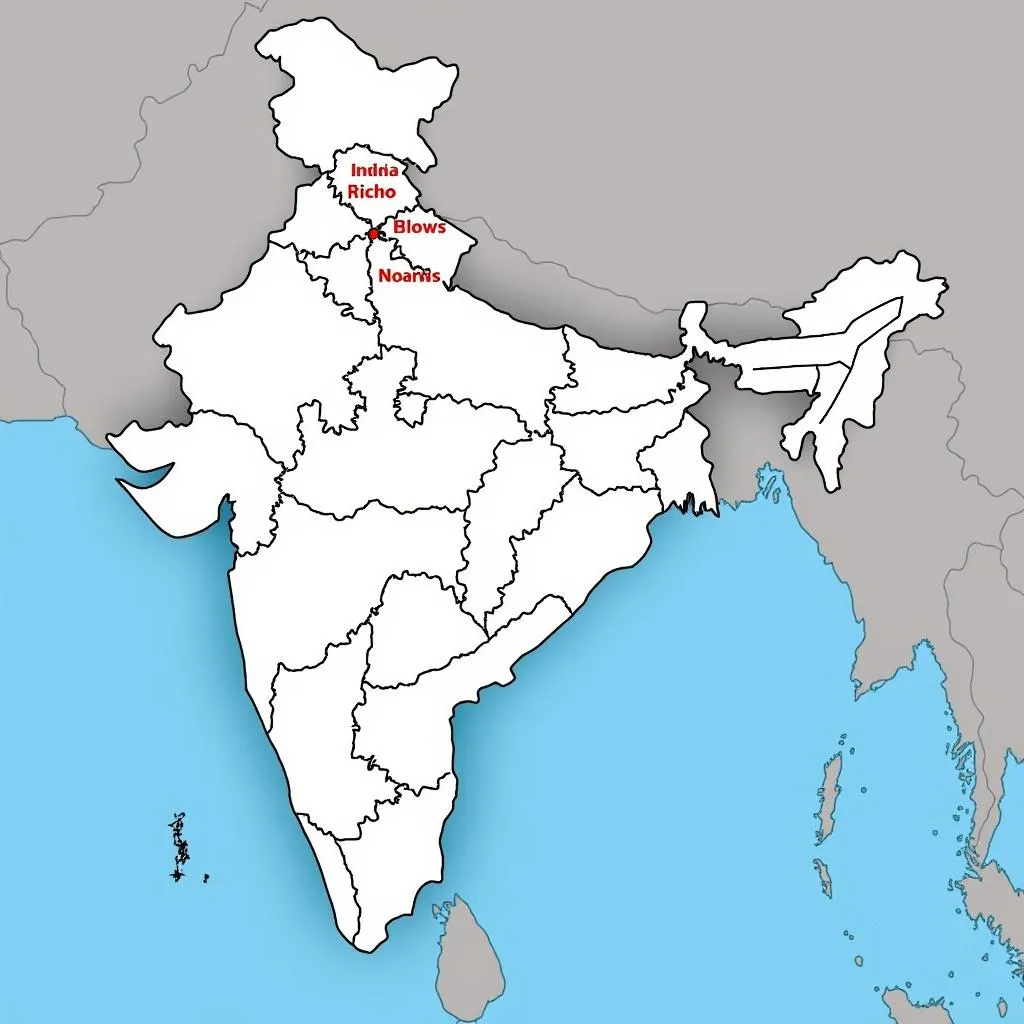India boasts a vast network of airports, and Airports Authority of India (AAI) plays a pivotal role in managing and developing these crucial infrastructure hubs. AAI currently owns and operates 18 international airports across the country, facilitating seamless air travel and contributing significantly to the nation’s economic growth. This comprehensive guide explores these 18 airports, providing insights into their significance, facilities, and the role they play in connecting India to the world.
AAI’s International Airport Network: Connecting India to the Globe
AAI’s international airport network is strategically located across India, offering a gateway to diverse destinations both domestically and internationally. These airports are equipped with modern infrastructure and amenities, ensuring a comfortable and efficient travel experience for passengers.
18 International Airports Owned by AAI
Here’s a list of the 18 international airports owned by AAI:
- Indira Gandhi International Airport (Delhi): India’s busiest airport, serving as the primary hub for international and domestic flights.
- Chhatrapati Shivaji Maharaj International Airport (Mumbai): A vital gateway to Western India, handling a significant number of international and domestic flights.
- Kempegowda International Airport (Bengaluru): A thriving hub for international and domestic flights, connecting Karnataka to the world.
- Chennai International Airport (Chennai): A crucial gateway to South India, facilitating trade and tourism in the region.
- Netaji Subhas Chandra Bose International Airport (Kolkata): A major hub for international and domestic flights, connecting Eastern India to global destinations.
- Rajiv Gandhi International Airport (Hyderabad): A fast-growing airport, serving as a vital gateway to Telangana and Andhra Pradesh.
- Cochin International Airport (Kochi): A gateway to Kerala, connecting the state to major international destinations.
- Trivandrum International Airport (Thiruvananthapuram): An important airport in Kerala, facilitating connectivity with global destinations.
- Calicut International Airport (Kozhikode): An essential airport in Kerala, connecting the state to international and domestic destinations.
- Mangalore International Airport (Mangaluru): A rapidly growing airport, connecting Karnataka to international destinations.
- Goa International Airport (Goa): A popular gateway to Goa, catering to both international and domestic tourists.
- Ahmedabad International Airport (Ahmedabad): A crucial hub for international and domestic flights, connecting Gujarat to the world.
- Lucknow International Airport (Lucknow): A rapidly developing airport, connecting Uttar Pradesh to international destinations.
- Amritsar International Airport (Amritsar): A significant gateway to Punjab, connecting the state to international destinations.
- Varanasi International Airport (Varanasi): A historical and religious center, connecting Uttar Pradesh to the world.
- Guwahati International Airport (Guwahati): A vital gateway to North East India, connecting the region to international and domestic destinations.
- Bagdogra International Airport (Bagdogra): An important airport in West Bengal, serving as a gateway to Darjeeling and Sikkim.
- Port Blair International Airport (Port Blair): A gateway to the Andaman and Nicobar Islands, connecting the islands to major cities in India.
Why These Airports Are Essential for India’s Growth
These airports play a crucial role in India’s economic development and contribute significantly to the country’s growth story. Here are some key reasons:
1. Boosting Trade and Commerce: International airports act as gateways for global trade and commerce. They facilitate the import and export of goods, boosting India’s economic growth.
2. Promoting Tourism: Airports connect India to the world, attracting tourists and generating revenue for the country’s tourism sector.
3. Creating Employment Opportunities: The airport industry creates numerous employment opportunities in various sectors like aviation, hospitality, and logistics.
4. Enhancing Connectivity: Airports connect different parts of India, improving connectivity and fostering regional development.
5. Modernizing Infrastructure: AAI invests in modernizing infrastructure at these airports, ensuring a seamless and efficient travel experience.
AAI’s Commitment to Sustainability
AAI is committed to sustainable development and is implementing various initiatives to reduce its environmental footprint.
“AAI is constantly striving to improve the efficiency and sustainability of our operations. We are committed to reducing our carbon footprint and ensuring a greener future for aviation,” says Dr. K.S. Pawan Kumar, Chairman, AAI.
Sustainability Initiatives by AAI
- Energy Efficiency: Implementing energy-efficient technologies to reduce energy consumption at airports.
- Waste Management: Promoting waste segregation and recycling programs to minimize waste generation.
- Water Conservation: Implementing measures to conserve water, such as rainwater harvesting and water-efficient fixtures.
- Green Building Practices: Constructing green buildings that meet sustainable design standards.
Future Outlook: Expanding India’s Air Connectivity
AAI is focused on expanding India’s air connectivity and modernizing its airport infrastructure.
“Our vision is to make India a global aviation hub and provide world-class airport infrastructure to our passengers,” says Mr. Arun Kumar, Member (Planning), AAI.
Future Plans for Expansion
- Modernization of Existing Airports: Upgrading existing airports with modern infrastructure and facilities.
- Construction of New Airports: Developing new airports in strategic locations across India to enhance connectivity.
- Developing Regional Airports: Investing in regional airports to promote economic growth and tourism in underserved regions.
FAQs
1. What is the role of AAI in India’s aviation sector?
AAI is a statutory body responsible for managing and developing India’s airport infrastructure. It owns and operates 18 international airports, along with numerous domestic airports across the country.
2. What are the key features of AAI’s international airports?
AAI’s international airports are equipped with modern facilities, including passenger terminals, cargo terminals, runways, and air traffic control systems. They also offer a wide range of services like baggage handling, ground transportation, and retail outlets.
3. How are AAI airports contributing to India’s economic growth?
These airports are playing a crucial role in boosting trade and tourism, creating employment opportunities, and enhancing connectivity across India.
4. What is AAI doing to promote sustainability at its airports?
AAI is implementing various initiatives to reduce its environmental footprint, including energy efficiency, waste management, water conservation, and green building practices.
5. What are AAI’s future plans for the development of India’s airport infrastructure?
AAI is focused on expanding India’s air connectivity and modernizing its airport infrastructure through investments in modernizing existing airports, constructing new airports, and developing regional airports.
 Map of 18 International Airports Owned by AAI in India
Map of 18 International Airports Owned by AAI in India
 Modern Airport Terminal Interior with Passengers and Baggage Handling System
Modern Airport Terminal Interior with Passengers and Baggage Handling System
Want to know more about AAI’s airports or have questions about your next trip? Get in touch with our team for expert advice and assistance!
Contact Us:
Phone: +13089626264
Email: [email protected]
Address: 404 Bothwell St, Oxford, NE 68967, Hoa Kỳ
We are available 24/7 to assist you!